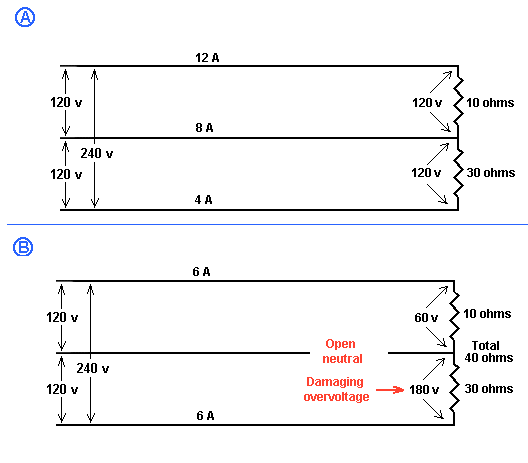jselesk2
Member
- Location
- Cleveland, Ohio
I am aware that if the neutral wire becomes open on an MWBC, this will result in a 240v circuit across the two phases of the circuit. I am curious as to why this does not happen under normal operation of a MWBC in which the two phases share a neutral wire. Why does all the current coming from both phases end up traveling down the neutral and not from phase to phase? Thank you.



